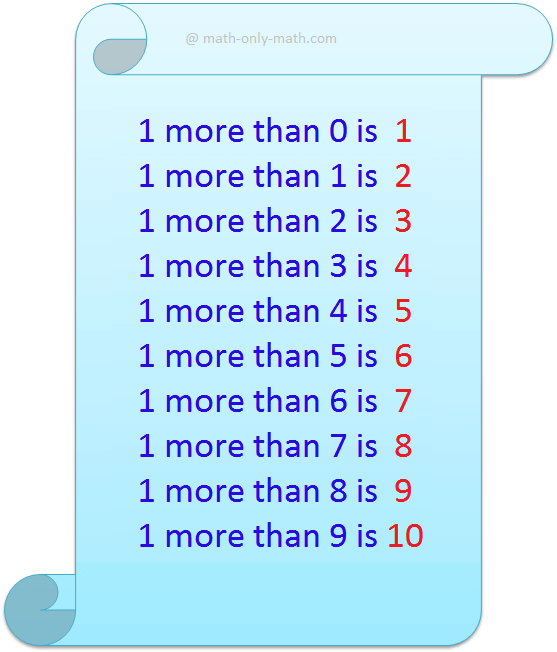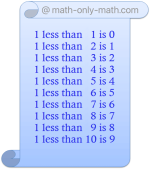Trigonometric Functions of any Angles
We will learn how to solve various type of problems on trigonometric functions of any angles.
1. Is the equation 2 sin2 θ - cos θ + 4 = 0 possible?
Solution:
2 sin2 θ – cos θ + 4 = 0
⇒ 2(1 - cos2 θ) - cos θ + 4 = 0
⇒ 2 - 2 cos2 θ - cos θ + 4 = 0
⇒ - 2 cos2 θ - cos θ + 6 = 0
⇒ 2 cos2 θ + cos θ - 6 = 0
⇒ 2 cos2 θ + 4 cos θ - 3 cos θ - 6 = 0
⇒ 2 cos θ (cos θ + 2) - 3 (cos θ + 2) = 0
⇒ (cos θ + 2) (2 cos θ - 3) = 0
⇒ (cos θ + 2) = 0 or (2 cos θ - 3) = 0
⇒ cos θ = - 2 or cos θ = 3/2, both of which are impossible as -1 ≤ cos θ ≤ 1.
Hence, the equation 2sin2 θ - cos θ + 4 = 0 is not possible.
2. Simplify the expression: sec(270°−θ)sec(90°−θ)−tan(270°−θ)tan(90°+θ)cotθ+tan(180°+θ)+tan(90°+θ)+tan(360°−θ)+cos180°
Solution:
First we will simplify the numerator {sec (270° - θ) sec (90° - θ) - tan (270° - θ) tan (90° + θ)};
= sec (3 ∙ 90° - θ) sec (90° - θ) - tan (3 ∙ 90° - θ) tan (90° + θ)
= - csc θ ∙ csc θ - cot θ (- cot θ)
= - csc2 θ + cot2 θ
= - (csc2 θ - cot2 θ)
= - 1
And, now we will simplify the denominator {cot θ + tan (180°
+ θ) +
tan (90° + θ) + tan (360° - θ) + cos 180°};
= cot θ
+ tan (2 ∙ 90° + θ) + tan (90° + θ) + tan (4 ∙ 90° - θ) + cos (2 ∙ 90° - 0°)
= cot θ + tan θ - cot θ - tan θ - cos 0°
= - cos 0°
= 1
Therefore, the given expression = (-1)/(-1) = 1
3. If tan α = -4/3, find the value of (sin α + cos α).
Solution:
We know that, sec2 α = 1 + tan2 α and tan α = - 4/3
Therefore, sec2 α = 1 + (-4/3)2
sec2 α = 1 + 16/9
sec2 α = 25/9
Therefore, sec α = ± 5/3
Therefore, cos α = ± 3/5
Again, sin2 α = 1 - cos2 α
sin2 α = 1 - (± 3/5)2; since, cos α = ± 3/5
sin2 α = 1 - (9/25)
sin2 α = 16/25
Therefore, sin α = ± 4/5
Now, tan α is negative; hence, α lies either in the second or in the fourth quadrant.
If α lies in the second quadrant then sin α is positive and cos α is negative.
Hence, we take, sin α = 4/5 and cos α = - 3/5
Therefore, sin α + cos
α = 4/5 - 3/5 = 1/5
Again, if α lies in the fourth quadrant then sin α is negative and cos α is positive.
Hence, we take, sin α = -4/5 and cos α = 3/5
Therefore, sin α + cos
α = - 4/5 + 3/5 = -1/5
Therefore, the required values of (sin α + cos α) = ± 1/5.
● Trigonometric Functions
- Basic Trigonometric Ratios and Their Names
- Restrictions of Trigonometrical Ratios
- Reciprocal Relations of Trigonometric Ratios
- Quotient Relations of Trigonometric Ratios
- Limit of Trigonometric Ratios
- Trigonometrical Identity
- Problems on Trigonometric Identities
- Elimination of Trigonometric Ratios
- Eliminate Theta between the equations
- Problems on Eliminate Theta
- Trig Ratio Problems
- Proving Trigonometric Ratios
- Trig Ratios Proving Problems
- Verify Trigonometric Identities
- Trigonometrical Ratios of 0°
- Trigonometrical Ratios of 30°
- Trigonometrical Ratios of 45°
- Trigonometrical Ratios of 60°
- Trigonometrical Ratios of 90°
- Trigonometrical Ratios Table
- Problems on Trigonometric Ratio of Standard Angle
- Trigonometrical Ratios of Complementary Angles
- Rules of Trigonometric Signs
- Signs of Trigonometrical Ratios
- All Sin Tan Cos Rule
- Trigonometrical Ratios of (- θ)
- Trigonometrical Ratios of (90° + θ)
- Trigonometrical Ratios of (90° - θ)
- Trigonometrical Ratios of (180° + θ)
- Trigonometrical Ratios of (180° - θ)
- Trigonometrical Ratios of (270° + θ)
- Trigonometrical Ratios of (270° - θ)
- Trigonometrical Ratios of (360° + θ)
- Trigonometrical Ratios of (360° - θ)
- Trigonometrical Ratios of any Angle
- Trigonometrical Ratios of some Particular Angles
- Trigonometric Ratios of an Angle
- Trigonometric Functions of any Angles
- Problems on Trigonometric Ratios of an Angle
- Problems on Signs of Trigonometrical Ratios
11 and 12 Grade Math
From Trigonometric Functions of any Angles to HOME PAGE
Didn't find what you were looking for? Or want to know more information about Math Only Math. Use this Google Search to find what you need.
Recent Articles
-
Word Problems on Multiplication and Division of Fractions | Worksheet
Apr 13, 25 10:09 AM
Here we will solve different types of word problems on multiplication and division of fractions. I. Solve the following word problems on multiplication of fractions. -
One More than Numbers upto 10 | Counting One More | Learn 1 more Than
Apr 11, 25 04:09 PM
1 more than means we need to add or count one more number to the given numbers. Here, we will learn counting one more than upto number 10. Examples of counting 1 more than up to number 10 are given as… -
One Less than Numbers upto 10 | Counting One Less | Learn 1 Less Than
Apr 11, 25 04:07 PM
What is one less than? 1 less than means we need to subtract or count one less number of the given numbers. Here, we will learn counting one less than upto number 10. Examples of counting 1 less than… -
Properties of Multiplication and Division of Fractions Worksheet | Ans
Apr 10, 25 03:17 PM
In properties of multiplication and division of fractions worksheet you will get different types of questions based on properties of multiplication of fractional numbers and properties of division of… -
Word Problems on Fraction | Math Fraction Word Problems |Fraction Math
Apr 09, 25 01:44 AM
In word problems on fraction we will solve different types of problems on multiplication of fractional numbers and division of fractional numbers.



New! Comments
Have your say about what you just read! Leave me a comment in the box below. Ask a Question or Answer a Question.